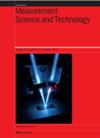新型无人驾驶飞行器路径规划方法:包含学习行为的沙猫优化算法
IF 3.4
3区 工程技术
Q1 ENGINEERING, MULTIDISCIPLINARY
引用次数: 0
摘要
无人驾驶飞行器(UAV)的路径规划在无人驾驶飞行器的飞行中发挥着重要作用,因此需要一种有效的算法来实现无人驾驶飞行器的路径规划。沙猫算法的特点是参数设置简单,易于实现。但收敛速度较慢,容易陷入局部最优。为了解决这些问题,我们提出了一种包含学习行为的新型沙猫算法(LSCSO)。LSCSO 借鉴了沙猫的生活习性和学习能力,在基本的沙猫优化算法中加入了新的位置更新策略,保持了种群的多样性,提高了优化过程中的收敛能力。最后,将 LSCSO 应用于具有挑战性的无人机三维路径规划,利用三次 B 样条插值生成平滑路径,并将所提出的算法与其他多种竞争算法进行了比较。实验结果表明,LSCSO 具有出色的寻优能力,在所有比较算法中能以最小的成本规划出安全可行的路径。本文章由计算机程序翻译,如有差异,请以英文原文为准。
A novel unmanned aerial vehicle path planning approach: Sand Cat Optimization Algorithm Incorporating Learned Behaviour
Unmanned aerial vehicle(UAV) path planning plays an important role in UAV flight, and an effective algorithm is needed to realize UAV path planning. The sand cat algorithm is characterized by simple parameter setting and easy implementation. However, the convergence speed is slow, easy to fall into the local optimum. In order to solve these problems, a novel sand cat algorithm incorporating learning behaviors (LSCSO) is proposed. LSCSO is inspired by the life habits and learning ability of sand cats and incorporates a new position update strategy into the basic Sand Cat Optimization Algorithm, which maintains the diversity of the population and improves the convergence ability during the optimization process. Finally, LSCSO is applied to the challenging UAV 3D path planning with cubic B-spline interpolation to generate a smooth path, and the proposed algorithm is compared with a variety of other competing algorithms. The experimental results show that LSCSO has excellent optimization-seeking ability and plans a safe and feasible path with minimal cost consideration among all the compared algorithms.
求助全文
通过发布文献求助,成功后即可免费获取论文全文。
去求助
来源期刊

Measurement Science and Technology
工程技术-工程:综合
CiteScore
4.30
自引率
16.70%
发文量
656
审稿时长
4.9 months
期刊介绍:
Measurement Science and Technology publishes articles on new measurement techniques and associated instrumentation. Papers that describe experiments must represent an advance in measurement science or measurement technique rather than the application of established experimental technique. Bearing in mind the multidisciplinary nature of the journal, authors must provide an introduction to their work that makes clear the novelty, significance, broader relevance of their work in a measurement context and relevance to the readership of Measurement Science and Technology. All submitted articles should contain consideration of the uncertainty, precision and/or accuracy of the measurements presented.
Subject coverage includes the theory, practice and application of measurement in physics, chemistry, engineering and the environmental and life sciences from inception to commercial exploitation. Publications in the journal should emphasize the novelty of reported methods, characterize them and demonstrate their performance using examples or applications.
 求助内容:
求助内容: 应助结果提醒方式:
应助结果提醒方式:


